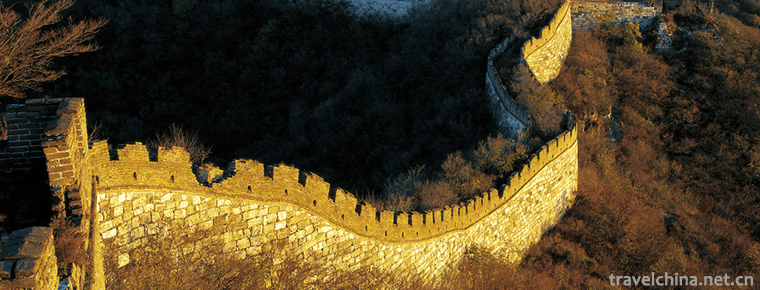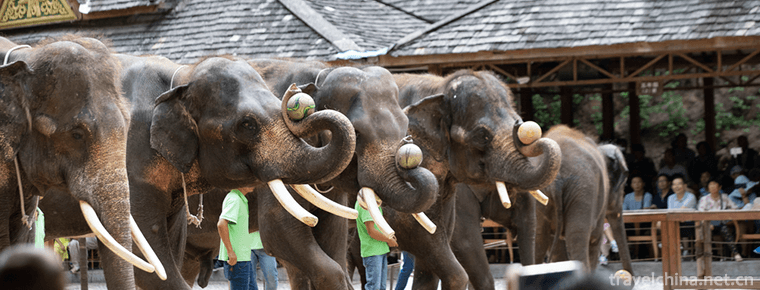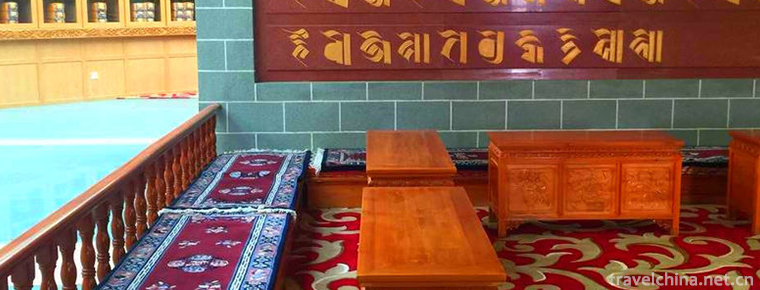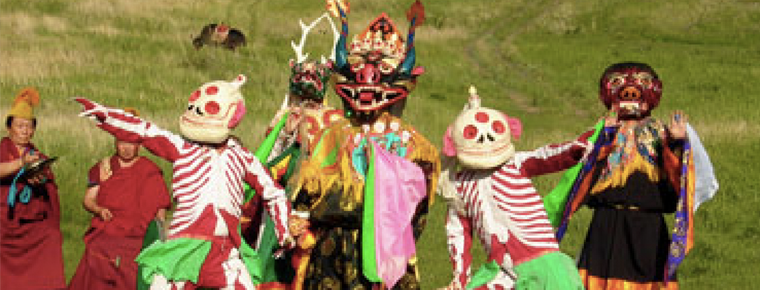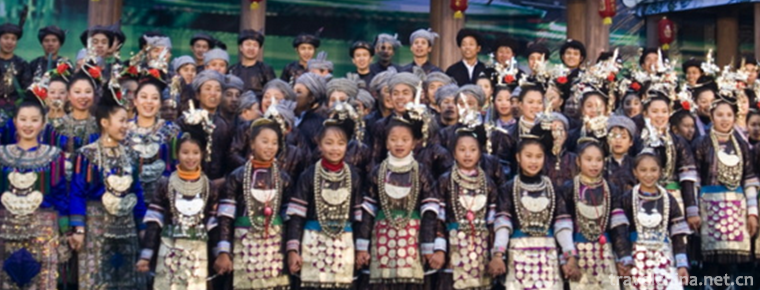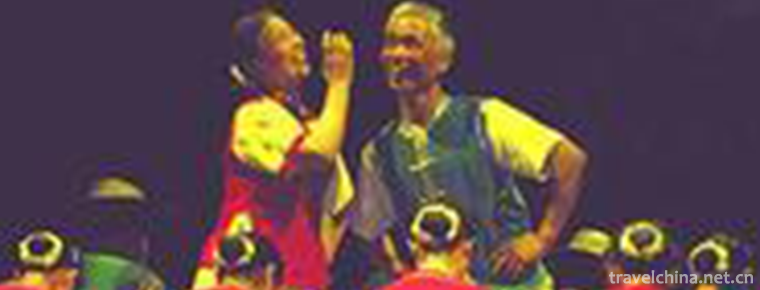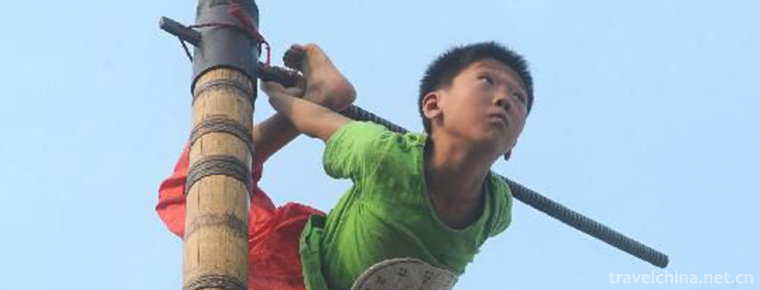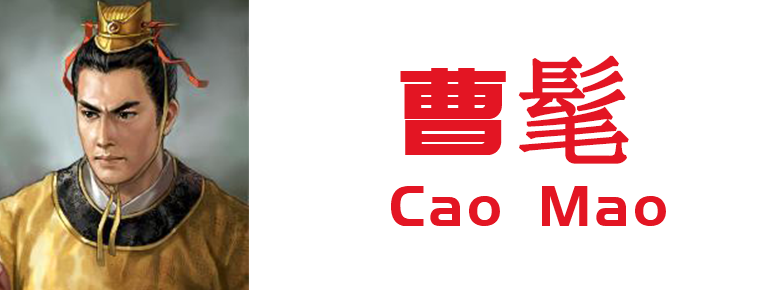China Coal Museum
The China Coal Museum is located at the intersection of Yingze Street and Jinci Road in Taiyuan City. It was completed and opened on September 30, 1989. The museum is divided into East and West Academies with an area of 11 hectares and a building area of about 90,000 square meters. It consists of exhibition hall, China Coal Science and Education Exchange Center, Academic Report Office, Office Research Building and Modern Science and Technology College.
China Coal Museum is a national coal industry museum. It is the collection center of historical relics, specimens, documents and materials of the coal industry in China. It is also a popular science education institution, scientific research institution and propaganda and education institution of the coal industry. In December 2017, it was selected as the first batch of practical education bases and camps for primary and secondary school students in China by the Ministry of Education.
Development history
In 1982, Shanxi Institute of Mining and Technology consulted the Ministry of Coal Industry on the preparation of the China Coal Museum. In October, at the Fifth Session of the Fifth National People's Congress, the National Coal Museum was proposed.
In April 1983, the Ministry of Coal approved the mission statement of the Coal Expo, with direct investment of 16.7 million yuan. On November 20, the Ministry of Coal Industry of China organized a design review conference for the China Coal Museum in Beijing. On December 13, the Preparatory Office of China Coal Museum was officially established.
In June 1984, a delegation of China Coal Museum headed by Dong Dasheng, Vice President of Shanxi Mining Institute, went to France and the Federal Republic of Germany to study the experience of Museum construction. In August, the Ministry of Coal Industry (1984) issued a circular to enterprises and institutions nationwide in accordance with No. 1031 of Coal Education Letter. In October, Bo Yibo inscribed the name of the China Coal Museum.
In May 1985, the China Coal Museum broke ground in Taiyuan.
On April 14, 1988, the Ministry of Coal changed the subordinate relationship of the Coal Expo Hall with document No. 338 (1988), which was led by Shanxi Coal Administration Bureau and was responsible for raising construction funds.
On September 30, 1989, the China Coal Museum was opened.
In March 1990, China Coal Science and Education Center, a supporting project of the China Coal Museum, was officially established and started construction in the same year. In April, Shanxi Unified Coal Mine Comprehensive Management Corporation was established in the China Coal Museum, which implements a set of people and horses, two brand systems.
On October 9, 1991, the board of directors of the China Coal Museum and the National Coal Heritage Collection Committee were formally established.
In June 1993, the Coal Art Museum of China Coal Museum, the Coal Generation Museum and the underground simulated mine layout of 3200 square meters were completed.
In November 1994, seven heroic bronze statues of the national coal front organized by the Ministry of Coal Industry were set up in the China Coal Museum.
In 1997, 8 million yuan of collection and display fees allocated by Shanxi Provincial Government were formally put in place.
In August 1998, according to the suggestions of the institutional reform of the State Council, the China Coal Museum was delegated to Shanxi Province by the State Administration of Coal Industry.
On September 16, 2000, the first basic exhibition of China Coal Museum was opened to the outside world.
On May 27, 2002, the second exhibition project of China Coal Museum officially began.
On March 28, 2003, China Coal Museum's Phase II exhibition and simulated mine renovation project were completed. On August 10, the project was officially opened to the outside world.
In October 2004, Shanxi Ancient Mural Museum was officially completed and exhibited in the China Coal Museum.
In May 2005, the China Coal Science, Education and Cultural Exchange Center was fully completed and put into operation.
Hold activities?
In August 1990, the China Coal Museum, as the main organizer, exhibited in Beihai Park, Beijing.
On October 25, 1993, the eighth Symposium of the Geological Professional Committee of the Chinese Museum Society was held at the China Coal Museum. Forty geological museums and 49 representatives from all over the country participated.
In December 2004, the ancient murals of Shanxi Museum of Ancient Murals were successfully displayed in Beijing.
On November 28, 2006, Mao Pengxi, chairman of Jingyuan Coal Industry Co., Ltd., and Wang Jun, general manager of Jingyuan Coal Industry Co., Ltd., donated Jinghong coal specimens and many cultural relics to China Coal Museum from Northwest China.
From April 18 to 20, 2007, a series of exhibitions of Shanxi miners moving China, sponsored by Shanxi Coal Mine Trade Union, was held at the China Coal Museum. On August 18, the Summer Camp of Science Popularization on the Night of the China Coal Museum was held at the China Coal Museum.
On May 7, 2008, the donation ceremony of Taixi Ujin was held at the China Coal Museum.
In 2013, China Coal Museum held a series of activities, such as "Love Hometown" Student Style Competition, "School Communication Cup" Chinese Dream - Love My Shanxi "Wujin" Tour, covering "Coal Popular Science Knowledge Competition", "Small Interpreter Competition", "China Coal Museum Volunteer Activity" and so on, which strengthened the city's primary and middle school students'understanding of coal resources in their hometown. Understanding, personally participated in and felt the charm of coal culture, and raised the city's youth awareness of energy conservation and environmental protection.
Honors
China Coal Museum has been awarded the titles of National First-class Museum, National Science Popular Education Base, National AAAA Tourism Scenic Spot and National Industrial Tourism Demonstration Base by the State Administration of Cultural Relics, the Chinese Association of Science and Technology and the National Tourism Bureau, and the titles of Shanxi Youth Education Base and Shanxi Patriotism Education Base by Shanxi Province.
In 2013, the China Coal Museum was named as the excellent national popular science education base in 2013 by the Chinese Association of Science and Technology in the annual work assessment of the national popular science education base at the end of the year.
On June 23, 2015, the Coal Sea Exploration Scenic Spot of the China Coal Museum was awarded as the seventh batch of civic morality construction window of provincial organs.
In December 2017, it was selected as the first batch of practical education bases and camps for primary and secondary school students in China by the Ministry of Education.
Tickets
Tickets are 60 yuan. Additional charges: Tour guide fee. China Coal Museum belongs to the industry museum. Because of the particularity of the exhibition, tourists can not visit it by themselves. In order to ensure the quality and safety of each visitor, tourists can voluntarily group together and invite a lecturer with other tourists. Fee standard: Chinese explanation: 50 yuan per time (1-10 people), 80 yuan per time (11-20 people); English explanation: 100 yuan per time, no more than 20 tourists per batch (times). In order to reduce the cost of tourists, tourists can combine themselves.
Exchange method: I. D. to the ticket office of the scenic spot. Reservations can take effect after 1.5 hours.
Return Rule: The product support is refunded at any time. If the ticket is not collected after verification, it can be cancelled free of charge.
Visiting time
Opening time: All year round, 8:00 a.m. - 6:00 p.m. every day
Ticket selling time: 8:00 a.m. - 5:00 p.m.
Traffic routes
Flight: Airport - Longcheng Avenue - Binhe East Road - Yingze Bridge - China Coal Museum.
Take the train: Take buses No. 1, No. 859, No. 611, No. 618, No. 618 and No. 308 from the railway station. Get off at Yingze Bridge West Station.
Take buses: take buses No. 1, No. 859, No. 809, No. 813, No. 38, No. 855, No. 611, No. 822, No. 848, No. 618, No. 618, No. 308, No. 863, No. 868, No. 52, No. 903, No. 905 and No. 865. Get off at Yingze Bridge West Station and enter the China Coal Museum.




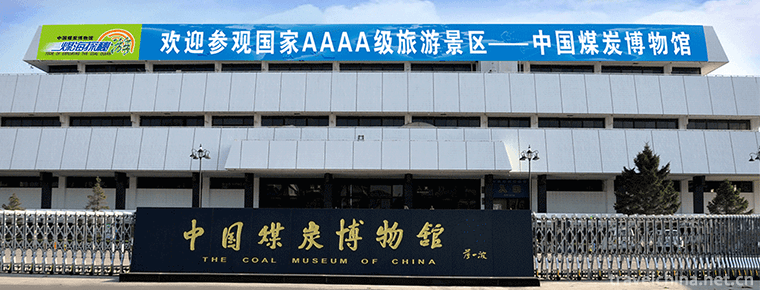
-
Fuping Pottery Art Village
Pottery Village is located in the north of Fuping County. It relies on the site of Tang Dingzhou Kiln. It is a cultural and custom experience scenic spot consisting of a quasi-three-star hotel, three .
Views: 154 Time 2019-01-12 -
Jiankou Great Wall
The Great Wall is located in Badaohe Township, northwest of Huairou District, Beijing suburb. It is 1141 meters above sea level and about 30 kilometers away from Huairou County..
Views: 237 Time 2019-01-21 -
Wild Elephant Valley in Xishuangbanna
The Wild Elephant Valley in Xishuangbanna is located in Mengzi Nature Reserve and "UNESCO Man and Biosphere Reserve" of Xishuangbanna National Nature Reserve.
Views: 129 Time 2019-02-25 -
Tibetan Medicine
Tibetan medicine is a bright pearl in the treasure house of Chinese medicine. The Tibetan people living in the snow-covered plateau for generations have accumulated .
Views: 133 Time 2019-04-05 -
Jamal
In June 2008, Chamane declared by Alxa League of Mongolian Autonomous Region was listed in the second batch of national intangible cultural heritage list with the approval of the State Council..
Views: 143 Time 2019-04-15 -
the Dong chorus
Originated in the Spring and Autumn Period and the Warring States Period, the Dong Grand Song has a history of more than 2500 years. It is a folk chorus form with multi-voice.
Views: 165 Time 2019-04-27 -
The legend of Qiren worrying about heaven
On November 11, 2014, the legend of Qiren worrying about heaven was approved by the State Council to be included in the fourth batch of national intangible cultural heritage list..
Views: 266 Time 2019-06-10 -
Lisu Folk Songs
Lisu people advocate singing in tune. In the multi-voice unaccompanied chorus of Lisu people, the three major tunes of Lisu folk songs are "swing time", "excellent leaf" and ".
Views: 99 Time 2019-06-17 -
Zhongshan Salt Water Song
Salt water song is a form of expression of Guangdong local folk songs, which is mainly spread among farmers and fishermen in the coastal and river network areas of Zhongshan, Panyu, Zhuhai and South C.
Views: 86 Time 2019-08-03 -
Zuo Gezhuang Club
Chongxin Village is located in Zuogezhuang, northeast of Wen'an County. Its economic prosperity and people's prosperity have become the material and cultural basis for the preservation and continuatio.
Views: 377 Time 2019-08-16 -
Cao Mao
Cao Mao (241 November 15th - 260 June 2nd) Zi Yan, Pei County, Yuzhou City. Anhui Province Bozhou City People, the Three Kingdoms period the Wei state of the Three-Kingdoms Period The fourth emperors .
Views: 242 Time 2019-09-15 -
Dispute on the meaning of Cheongsam
Under the influence of the Qing Dynasty's Qiren's robes, women's gowns have been referred to as cheongsam since the Republic of China. Due to the influence of the environment at that time, most people know that the women of the Manchu and Qing Dynasty had their own cheongsam,.
Views: 120 Time 2020-12-11

